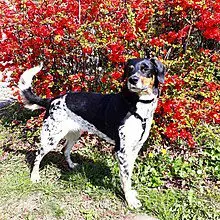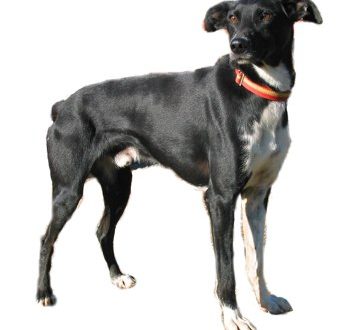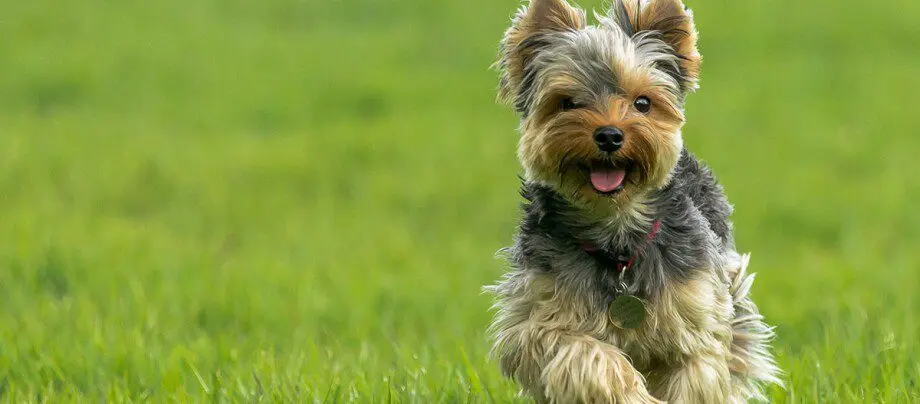
Yorkshire Terrier
Other names: York
The Yorkshire Terrier is one of the most popular pet dog breeds in the world. The Yorkie is charming in appearance, energetic, affectionate and makes an excellent companion.
Contents
- Characteristics of Yorkshire Terrier
- Basic moments
- History of the Yorkshire Terrier
- Video: Yorkshire Terrier
- Appearance of the Yorkshire Terrier
- Photo of a Yorkshire Terrier
- Personality of the Yorkshire Terrier
- Education and training
- Care and maintenance
- Health and disease of the Yorkshire Terrier
- How to choose a puppy
- Photos of Yorkshire Terrier puppies
- How much does a yorkshire terrier cost
Characteristics of Yorkshire Terrier
| Country of origin | UK |
| The size | miniature |
| Growth | 18-20 cm |
| Weight | up to 3.2 kg |
| Age | 14-16 years old |
| FCI breed group | Terriers |
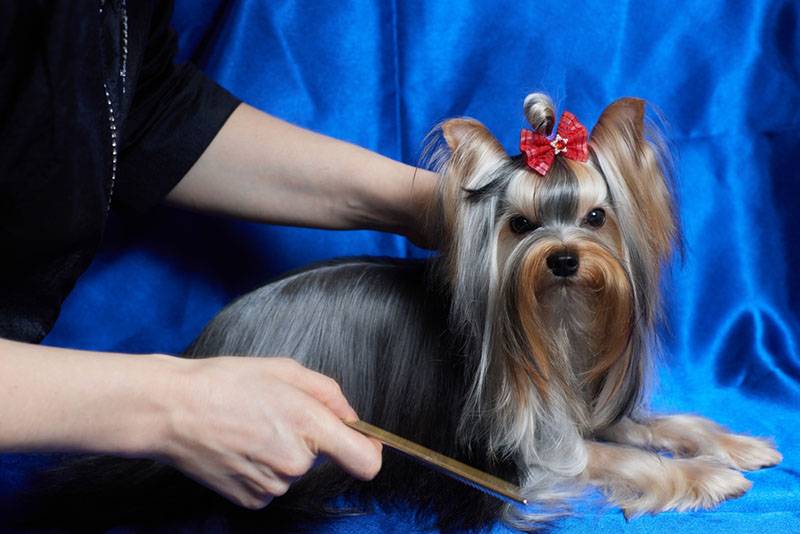
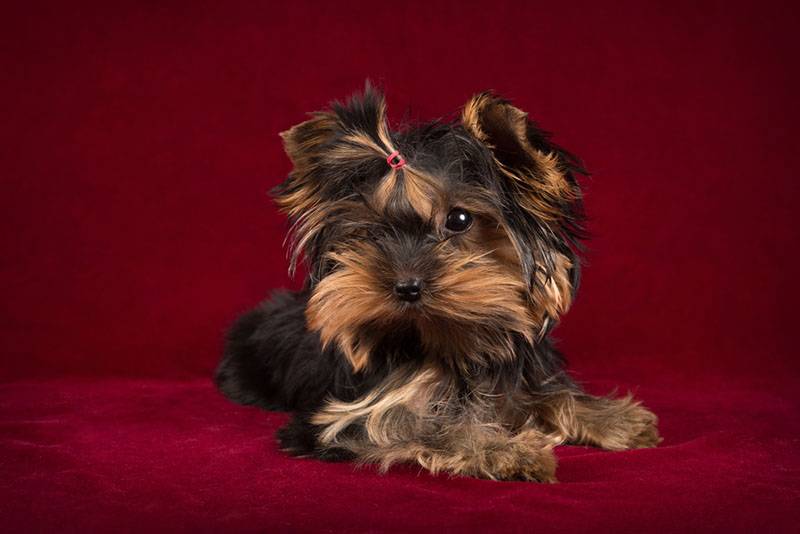
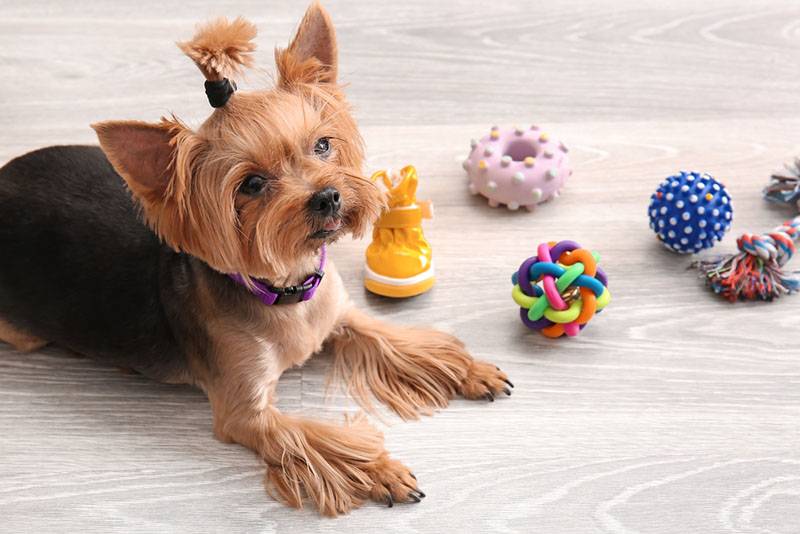
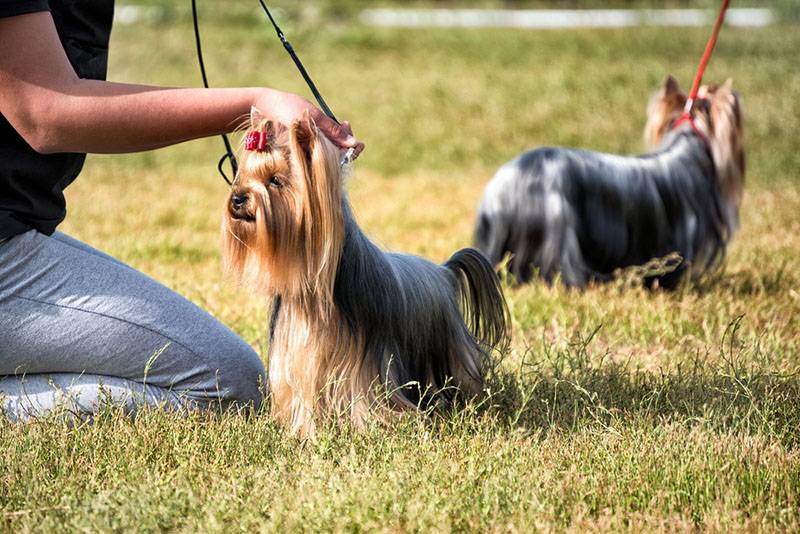
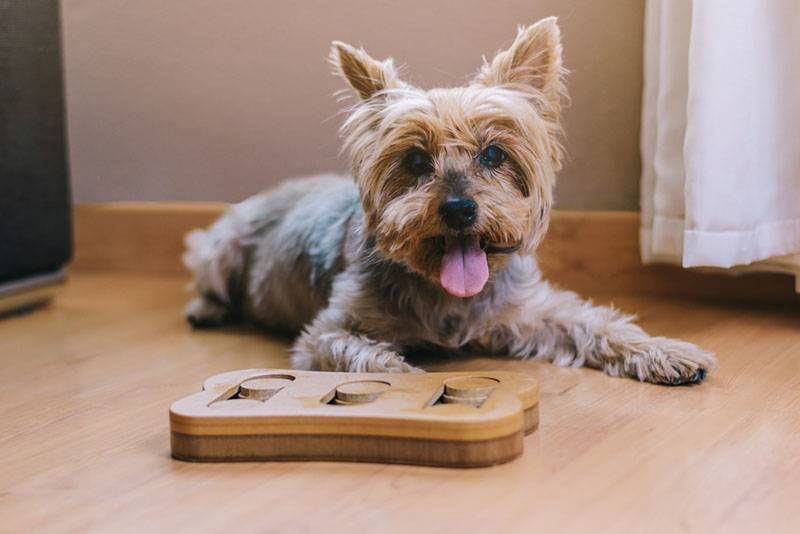
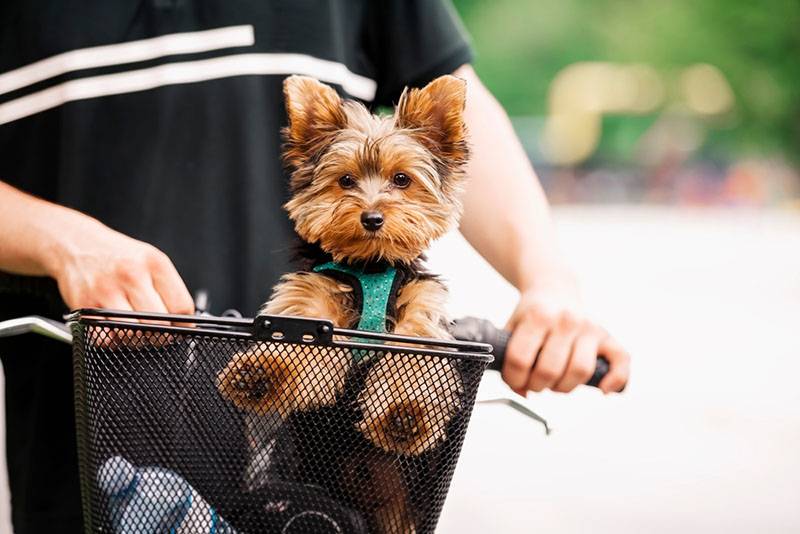

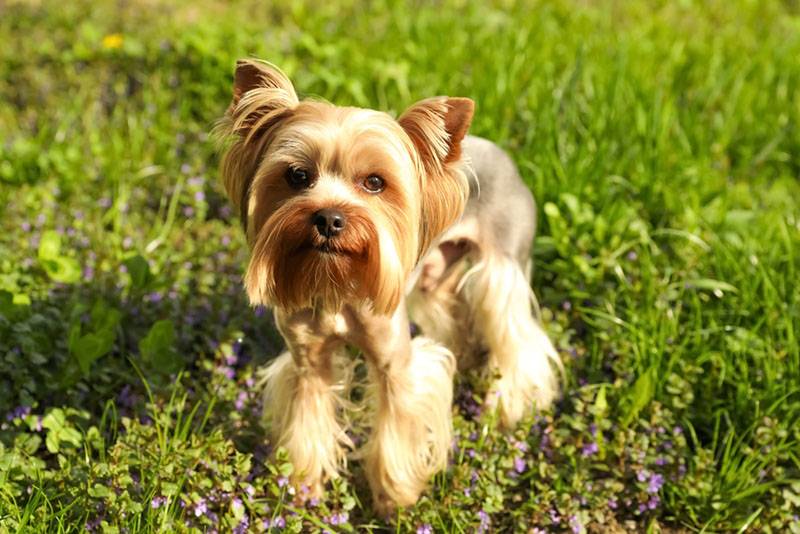
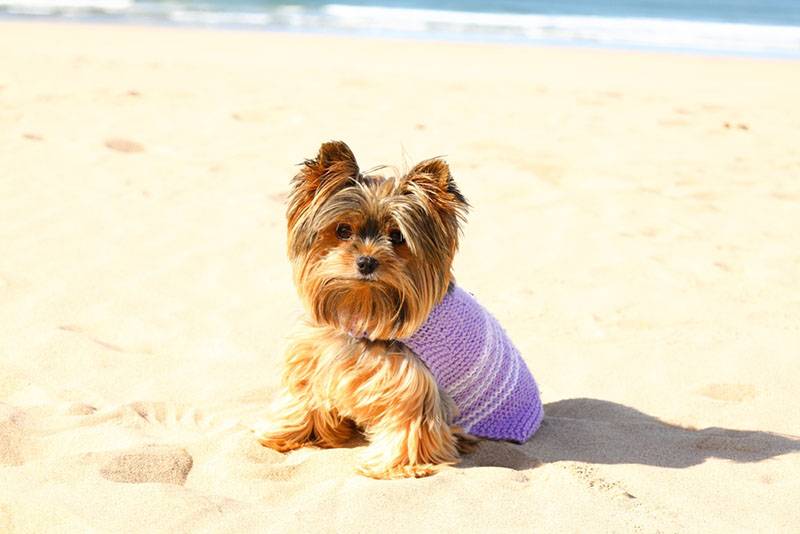
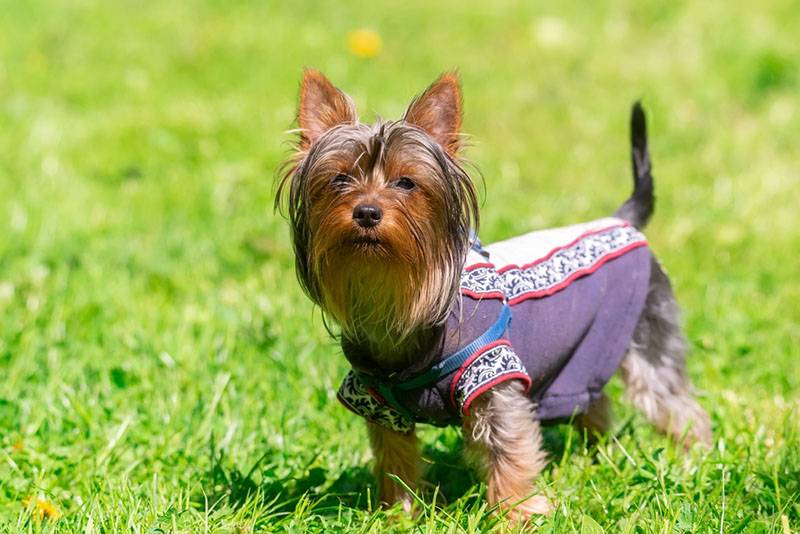
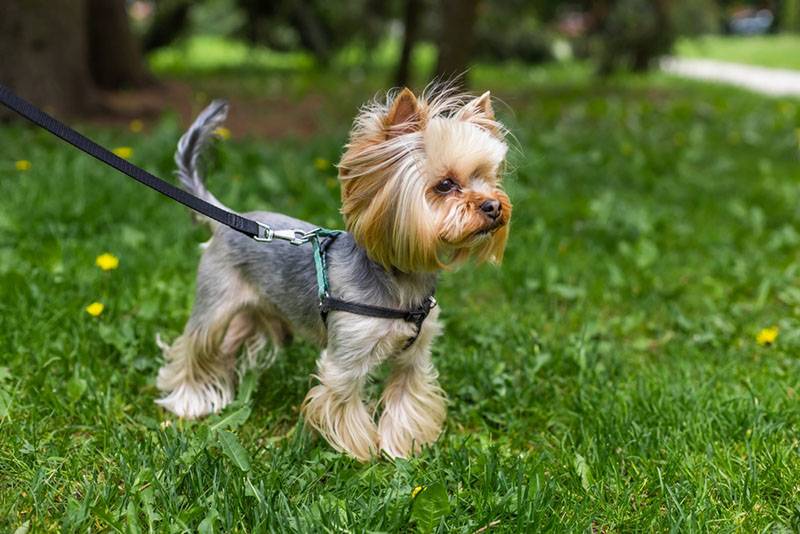
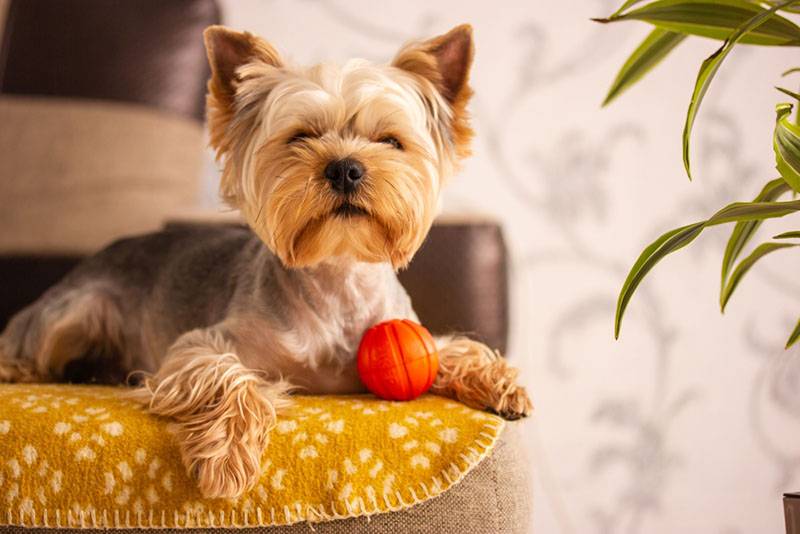
Basic moments
- The Yorkshire Terrier is an excellent dog, in the character of which courage, playfulness, endurance are combined with amazing delicacy, intelligence and quick wit.
- An excellent friend for all family members, but he considers one to be the owner, to whom he is selflessly devoted.
- York is a cheerful companion for children and teenagers, ready to join games and fun at any moment with all his energy.
- For older people, especially single ones, he will become a good companion, devoted and disinterested.
- Feels comfortable both in small apartments and in country houses.
- Due to his intelligence, the Yorkie is easy to train, but the process is complicated by his restlessness.
- The Yorkshire Terrier, like any decorative dog, requires attention to its appearance. Long-haired dogs need a weekly bath, short-haired Yorkies bathe once every 2-3 weeks. You can learn how to do standard haircuts yourself, and grooming masters create model hairstyles. During the procedures, the dog likes to play pranks.
- The Yorkie is picky about food and picky. Many products are contraindicated for him.
- The health of this tiny dog must be treated with special attention and try to protect it from injury.
- To buy a guaranteed purebred Yorkshire Terrier, you should contact a breeder with a proven track record.
The Yorkshire Terrier is an adorable dog with a gorgeous silky coat that looks like a living toy and has unique qualities. A brave heart beats in her miniature and graceful body, and selfless devotion to her owners and readiness to protect her home cause endless respect and tenderness. Cheerful, smart, friendly Yorkie, always ready to share his good mood with others, is adored by millions of people and is one of the ten most popular breeds in the world.
History of the Yorkshire Terrier
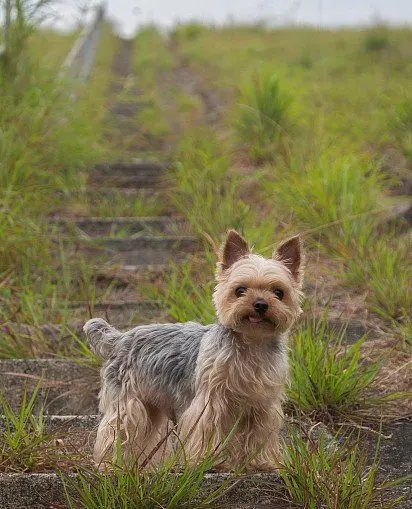
Yorkshire terriers are descended from different types of Scottish terriers, and this breed owes its name to the area where it was bred – the county of Yorkshire. Terriers from Scotland, miniature but hardy dogs with a determined character and powerful jaws, were brought to England by Scottish workers who arrived in Yorkshire in search of work in the middle of the 19th century.
Before turning from a brave and merciless rodent hunter into a respectable graceful companion dog, the Yorkshire Terrier has come a long way of genetic transformation. It is not known for certain which breeds of Scottish Terriers became the progenitors of the Yorkie, but in their current appearance, the features of the Clydesdale Terrier, Paisley Terrier, and Skye Terrier are clearly visible. Presumably, among the founders of the breed were also Waterside Terriers, dogs popular with Yorkshire peasants – hunters of foxes, badgers and small rodents. Some cynologists suggest that at the final stage of the formation of the breed, maltese lapdogs participated in the crossing , to which the Yorkies allegedly owe their silky coat.
At dog shows in Great Britain, Yorkies began to be shown in 1861, first under the name “Rough and Broken-coated”, “Broken-haired Scotch”. In 1874, the new breed was officially named the Yorkshire Terrier. In 1886, the Kennel Club (English Kennel Club) entered the Yorkie into the stud book as an independent breed. In 1898, breeders adopted her standards, which have not changed to this day.
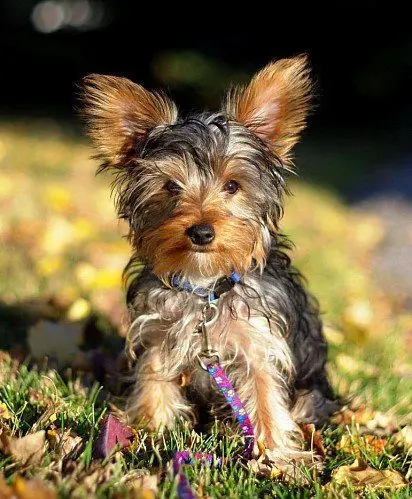
This breed began to penetrate the North American continent in the early 70s of the century before last. The first Yorkshire Terrier was registered with the American Kennel Club (AKC) in 1885. By the way, 100 years later, the Yorkie himself became the progenitor of a new, very rare breed – The Biewer Terrier, which was first called the Biewer Yorkshire Terrier.
The fame of these cute, energetic dogs with a cheerful disposition reached its peak in the Victorian era. In imitation of Queen Victoria, who adored dogs, ladies from the aristocratic circles of Britain and the New World carried their pets everywhere, dressing them up and pampering them like their beloved children.
It is believed that the first Yorkshire Terrier appeared in Russia in 1971. It was presented as a gift to the ballerina Olga Lepeshinskaya. The first Yorkie breeding kennel appeared in 1991 in Mytishchi.
And in our century, Yorkshire Terriers remain in the mainstream, entering the top ten most popular breeds in the world. For three years in a row, from 2006 to 2008, they held the honorable 2nd place in the AKC rating.
Video: Yorkshire Terrier
Appearance of the Yorkshire Terrier
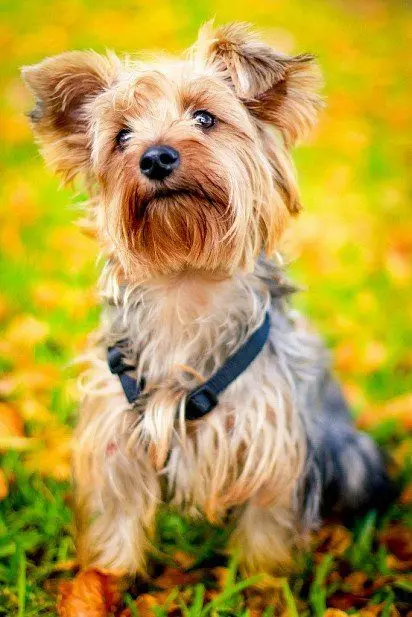
This miniature dog is quite strong and portly. Her height from floor to withers is from 15.24 to 23 cm. Standard weight is from 1.81 to 3.17 kg (no more than 3 kg for exhibition specimens).
The coat of puppies is black and brown, which can be combined in different ways. As they grow older (usually at the age of 5-6 months), the black color gradually begins to acquire bluish hues, and the brown lightens. By the age of one and a half years, the coat of the Yorkshire terrier from the scruff to the base of the tail already has a dark bluish-steel color, and the muzzle, chest and paws are painted in rich golden fawn.
Frame
The Yorkshire Terrier is built harmoniously, its body has a proportional structure. He is quite muscular and elegant at the same time. The back of the dog is rather short, horizontal. The height at the withers corresponds to the height of the croup. The posture of the Yorkie is proud, sometimes this crumb looks touchingly important.
Head
The head of the dog is small, with a flat arch, the muzzle is slightly elongated.
Eyes
The eyes of a Yorkie are of medium size, brilliant, expressing curiosity and outstanding intelligence.
Ears
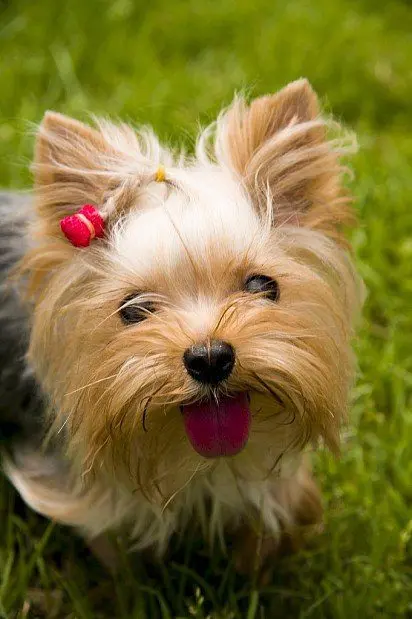
The ears are miniature, V-shaped, erect, set not too far apart, covered with soft short hair. Fur color is light golden.
Teeth
The Yorkshire Terrier is characterized by a scissor bite: the upper canines slightly cover the lower ones, and the incisors of the lower jaw closely adjoin the back side of the upper, forming a kind of lock.
limbs
The front paws of Yorkies should be slender, straight, without protrusion of the ulnar bones either inward or outward. The hindquarters, when viewed from behind, should appear straight, with a slight curve seen from the side. The claws on the paws are black.
It is customary to remove dewclaws (dewclaus) on the hind legs, on the front ones – at the request of the owners.
Traffic
In the movement of the Yorkshire Terrier, there is energy, freedom. Stiffness is not inherent in the dog.
Tail
The tail is traditionally docked to medium length. Cupping itself is not necessary. The tail is densely covered with hair, the color of which is darker and more saturated than that which covers the body.
Wool
The pride of the Yorkshire Terrier is its finest, shiny, silky, perfectly straight coat, which is often called hair. In the classic version, it should be divided from the base of the skull to the tip of the tail and fall perfectly evenly and straight on both sides of the body, reaching the floor. In order for such a handsome man or beauty to always look impeccable, you will need to devote a considerable amount of time to them daily. This makes sense if the Yorkie is a participant in exhibitions, a TV show hero, or he is invited to photo shoots. However, among the owners of such “super star” there are many people who are simply selflessly devoted to this breed of dog.
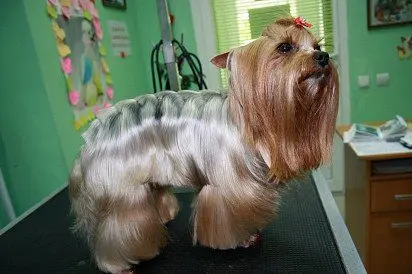
Most owners of Yorkshire terriers prefer to cut them. There are several dozen models of haircuts: from simple to incredibly sophisticated. Procedures take place in grooming salons or at home with the invitation of the master. Sometimes short-haired Yorkshire terriers make a splash no less than their long-haired relatives, similar to aristocrats.
From time to time in the nature of the Yorkshire Terrier there is a genetic leap. This is called the “return gene” or simply “return”. In this rare case, your black-and-brown pet’s coat will not turn bluish-gold like it should. Black color will remain as such, without any hint of blue, and brown will turn into golden red. This Yorkie is called Red Legged Yorkies, literally – the red-legged Yorkshire terrier.
Photo of a Yorkshire Terrier

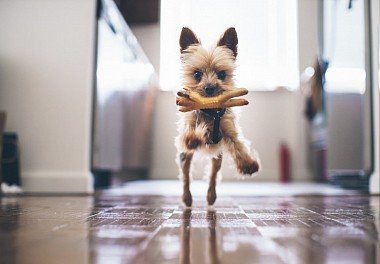
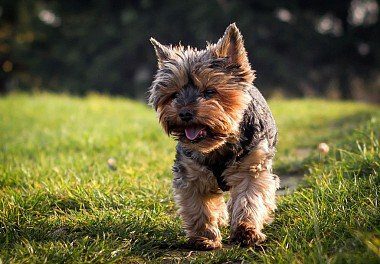
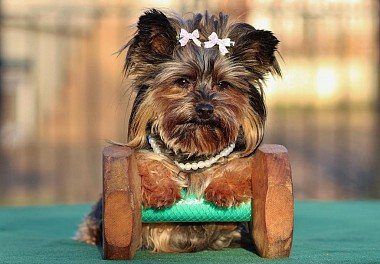
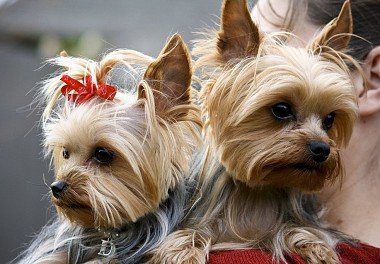
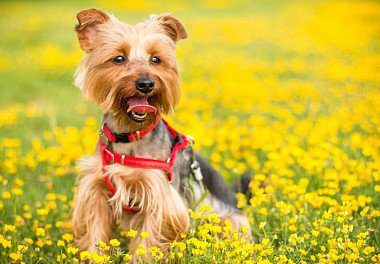
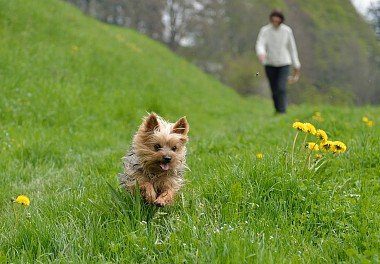
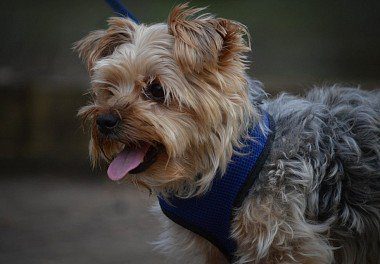
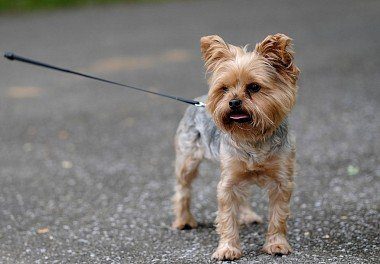
Personality of the Yorkshire Terrier
Yorkshire terriers consider themselves the masters of the house, while experiencing the most tender feelings for their owner and in need of his attention. Like all terriers, they are very energetic, hardy, have a good reaction. Yorkies are very brave dogs, ready to defend their home and master without hesitation. They are smart, well trainable.
The gait of the Yorkshire Terrier expresses self-confidence and even some arrogance. Walking without a leash, in the wild, he explores the world with curiosity, loves to sniff everything carefully, and listens to unfamiliar sounds with visible anxiety. Despite the ostentatious independence, Yorkies try to keep their master in sight, and if they do not find him, they are worried.
These cute dogs are very friendly and easily find a “common language” with other animals living in the house. In communication with strangers, the individual traits and peculiarities of the upbringing of each Yorkshire terrier are manifested: some are ready to bark at any stranger, others are almost “kiss” a dog running up to him, especially a relative.
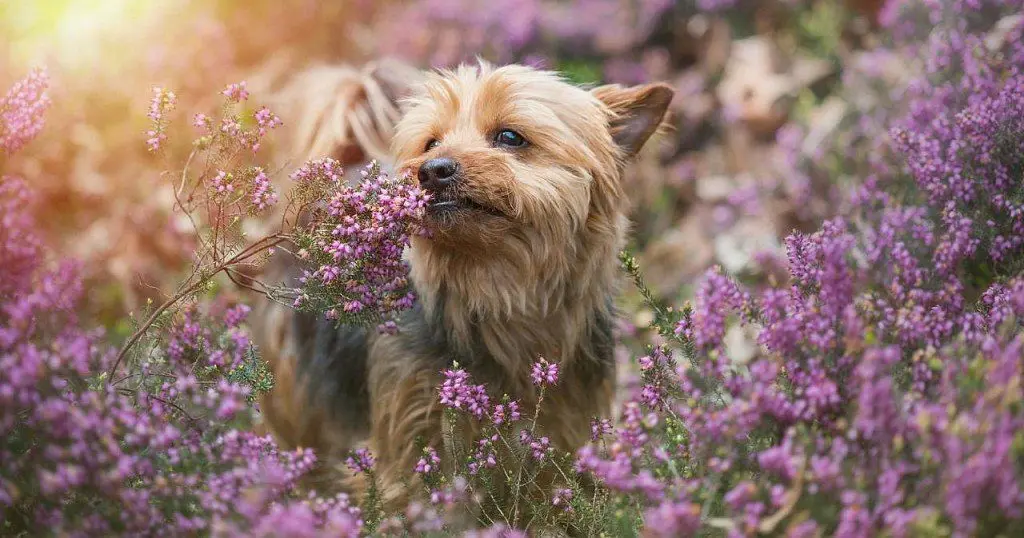
Education and training
The Yorkshire Terrier’s intelligence is above average, and it is not difficult to train him to be “good manners”. You need to educate your pet from childhood, and first of all it needs to be socialized. The Yorkie should be accustomed to household noises gradually: first try to speak in low tones in front of him, do not turn on the TV or receiver loudly, and, moreover, do not do this at the same time as the washing machine or vacuum cleaner is running.
Do not pounce on the pet immediately with hugs and kisses – he should also get used to caresses gradually. When the dog gets used to your family and home, it will already be possible to introduce him to other people, take him to unfamiliar places, gradually expanding his horizons. If everything is done step by step, without giving the puppy any cause for concern, he will grow up as a self-confident, friendly and balanced dog, not experiencing shyness and timidity even when meeting with an impressive size fellow.

Some difficulties in accustoming the York to commands and order arise because of his stubborn, independent nature and restlessness, so the training should be short, and the dog should be encouraged for the successes. Choose a specific word or phrase for praise that you will always use. Encouragement goodies should also be at the ready.
Yorkshire terriers do not need to be specially trained for fun, sometimes they themselves come up with plots for games. But the ability of this dog to turn any household object into a toy should be controlled and his claims for things that are unsuitable for this purpose should be suppressed.
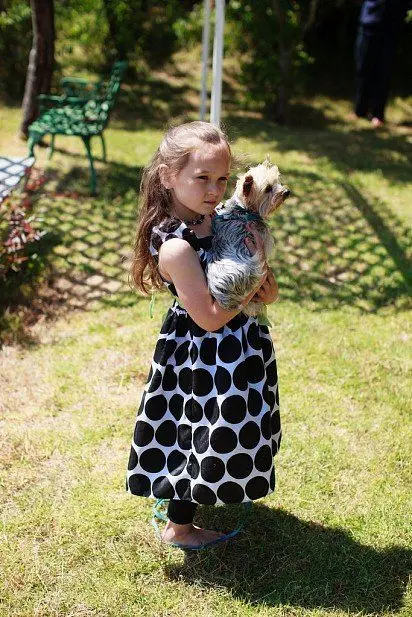
If the dog is naughty: he gnaws on slippers, wallpaper, is engaged in a popular business among terriers – digging, wherever necessary – only the word “fu” and a harsh tone can be punishment, physical punishment is unacceptable. Express your dissatisfaction only if you find the dog at the crime scene, otherwise he will not understand what, in fact, you want from him.
It is desirable for the Yorkshire Terrier to develop a daily schedule. Feed him at the same time, walk him. Allocate certain hours for games, care for him, sleep. York will not object to the regime. On the contrary, it will allow him to feel safe and look forward to the next manifestation of attention to his own person with pleasure. The Yorkshire Terrier is fairly easy to potty train, which is convenient for older people who find it difficult to walk the dog several times a day.
Like every small dog, Yorkshire Terriers experience a panic fear of traffic, which they express in hysterical barking and fussy dashes. This creates problems when walking or driving, but you can help him overcome this condition. Take your dog out for a late-night walk along the sidewalk when traffic is at a minimum. When the car approaches, hold the leash firmly, reducing its length as much as possible, start a “conversation” with your pet in a confident and calm voice, distracting him from the noise. Continue walking slowly at the same pace as if nothing is happening. At that time, when the dog does not show a pronounced fuss when the car appears, treat him with a reserved gift. After a month or two, you will be able to safely walk with your Yorkie in any busy, noisy place.
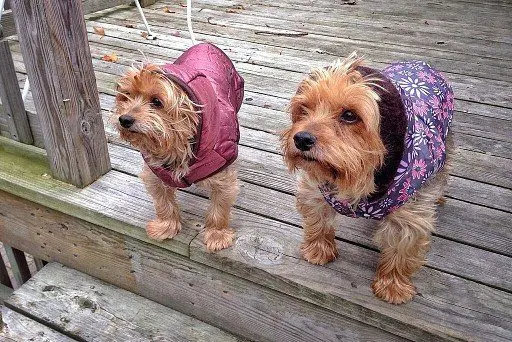
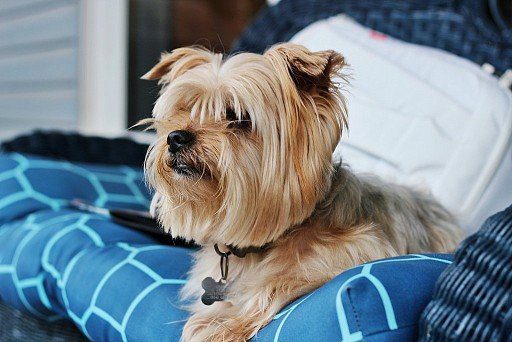
Care and maintenance
As soon as you bring a Yorkshire terrier puppy into the house, immediately arrange places for him to eat and toilet. They must be constant, otherwise the dog will start to get nervous. Choose a warm area for him in the room, and place a small playpen with a bedding and an impromptu cozy bed there.
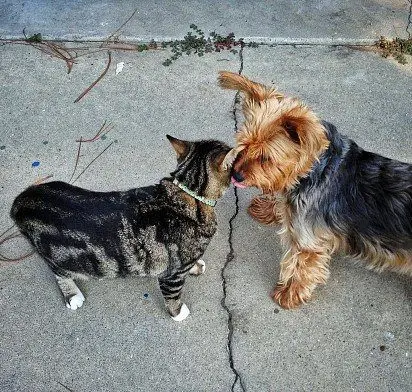
Puppies must be vaccinated. The first vaccinations are given at the age of about 2 months. Walking can be done only after all the necessary vaccinations have been made. At first, it is advisable to take the puppy outside 1-2 times a day in warm, but not hot weather for 10-15 minutes. Increase the number of walks and time in the air should be gradually. It is advisable to take an adult dog for a walk at least 3 times a day for half an hour.
Yorkshire terriers living in country houses spend much more time in nature, of course, and usually they themselves realize when it is time for them to rest. But if you notice that your pet is playing too much and overexcited, take him indoors, give water at room temperature and try to unobtrusively, with the help of affection, lure the dog into his rest area.
Yorkshire Terriers need regular nail trimming, eye washing, teeth and ear cleaning and bathing. None of these procedures are without their whims, so you will need perseverance and confidence in your own actions.
The dog’s claws should be trimmed every 2-3 months. It is better to do this after swimming. Use quality scissors designed specifically for this procedure. You should always have a styptic pencil or silver nitrate on hand. If you accidentally injure your pet, they will help heal the wound. For those who are not sure of their professionalism, it is better to contact a grooming salon. Everything is done with care and quality.
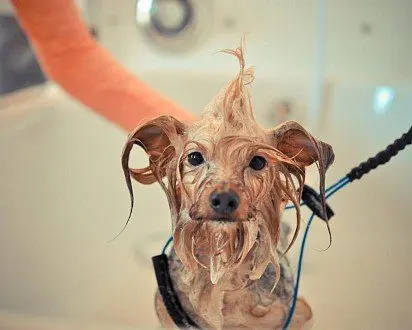
In the morning and evening, clean the corners of the dog’s eyes with a damp cloth or a special cotton swab. It is also suitable for cleaning the ears. Treat your pet’s teeth with all seriousness, otherwise the Yorkie will develop tartar and develop caries. This threatens that by the age of three his teeth will loosen, and by five he may remain completely toothless.
The Yorkshire Terrier needs constant and meticulous grooming for its extraordinary silky coat. Bathing, combing, haircuts – for some reason, Yorkies especially do not like these procedures. Long-haired dogs should be bathed once a week, short-haired dogs – once every 2-3 weeks, combed 2-3 times a day and once every two days, respectively. All this is not very difficult to do on your own, but if a curly haircut follows bathing, then you can entrust the entire range of work to the grooming master.
Before bathing the dog, it should be carefully combed, then placed in a bath with water at a temperature of 34-35 ° C. Place a rubber mat on the bottom of the tub to keep your dog from slipping. It is better to wash your pet with a special “dog” shampoo. After the procedure, wrap the Yorkie in a towel and take it to a warm room. When it dries a little, it should be combed again and, armed with sharp scissors, cut off the constantly growing hair in the area of \u200b\u200bthe pillows and the anus (for hygiene), carefully shorten the hairline at the point of the ears. If your Yorkshire terrier has a long coat, spread his combed hair proportionally on both sides and shorten the ends just above floor level. The advantage of Yorkies over many other dog breeds is the fact that they practically do not shed.
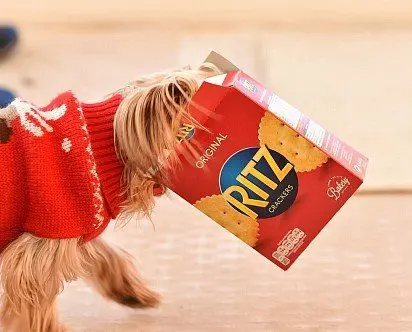
The Yorkshire Terrier has its own relationship with food. It is quite typical for him not to lick the dishes with food to the bottom, as most dogs do, but to eat exactly as much as he sees fit.
Yorkie can be fed homemade food or buy food in specialized stores. Homemade food should include beef and chicken (raw, but scalded with boiling water), offal, buckwheat, rice. Among fermented milk products, and their Yorkshire terriers are not very welcome, kefir, cottage cheese, fermented baked milk are recommended. A delicacy for these dogs are vegetables and fruits, both raw and boiled.
There are a number of foods that should be excluded from the Yorkshire Terrier’s diet. Among them are fried, fatty, smoked products, semolina and oatmeal porridge, muffin, sausage, fatty cheese, butter, mushrooms, cabbage, chocolate, citrus fruits, nuts.
Yorkies often suffer from lack of appetite. The desire to eat in a dog can disappear completely if for some reason you have drastically changed the composition of the food. Do not immediately cancel your usual food, just gradually, in small portions, replace it with other ingredients. It is better to feed the Yorkshire Terrier 2-3 times a day, not counting the symbolic treats that can be treated to him for worthy behavior.

Health and disease of the Yorkshire Terrier
The Yorkshire Terrier, like any other breed of dog, is prone to certain diseases – congenital or acquired. These dogs have a predisposition to certain diseases. So, already at a very early age (from birth to 4 months), a Yorkie can expect such a most dangerous and common ailment among this breed as hypoglycemia – a rapid decrease in blood sugar. Its symptoms are drowsiness, trembling, confused behavior, convulsions, weakness, and a decrease in body temperature. The puppy may go into a coma. As soon as you notice any of these symptoms, stabilize your dog by rubbing honey on the puppy’s gums and contact your veterinarian immediately. Hypoglycemia also occurs in adult dogs, but much less frequently.
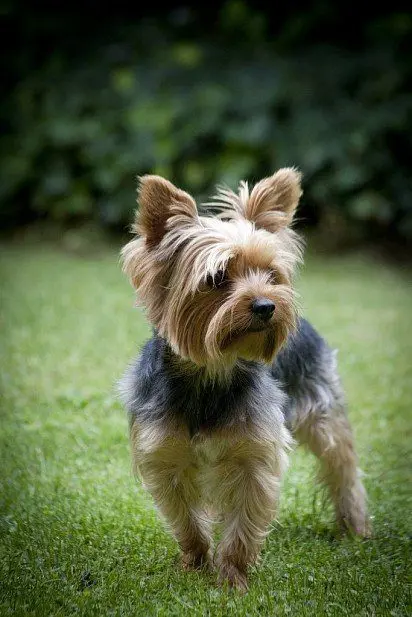
Yorkies, like all terriers, are prone to many cancers (especially cancer of the blood, stomach). Studies have shown that female dogs over the age of 11 are most likely to develop cancer. On average, Yorkshire Terriers live up to 12-15 years.
These tiny dogs have brittle bones, which increases the risk of injury to the neck, hip, and knee. They are also genetically predisposed to retinal dysplasia.
Another unpleasant disease is neurodermatitis, which threatens to spoil the luxurious coat of your pet. A sick dog constantly licks itself, as a result of which the hair begins to fall out. This condition can be caused by stress, nervousness, or extreme boredom. To begin with, change the home environment, change the dog’s lifestyle. In some cases, the veterinarian prescribes melatonin.
Yorkies easily overheat in the heat, after which they do not feel well. In cold weather, they will need protection. In frosts, it is better to dress them up in warm clothes, which can be purchased in specialized stores.
Owners of “mini” (or “toy”) Yorkshire terriers weighing less than 1.8 kg need to be prepared for the fact that they are more painful than standard-sized dogs, as they have a weakened immune system. The life span of such Yorkies is 7-9 years.
Some owners are worried that their pet is too big. This can be due to both the dog’s wide bone and obesity, although the latter is rare. If the Yorkshire Terrier weighs more than 4.3 kg, it is best to contact your veterinarian to correlate his weight and proportions.
If it’s all about obesity, your Yorkie will have to go on a diet. The amount of food should be left the same, but replace some of the high-calorie foods with vegetables (broccoli, carrots). You can buy special foods that are low in calories. All dietary changes should be gradual. At the same time, you need to increase the amount of physical activity. For example, if your dog is used to walking for 20 minutes, increase the length of the walk to half an hour.
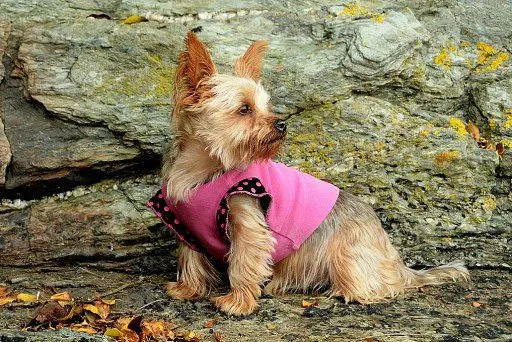
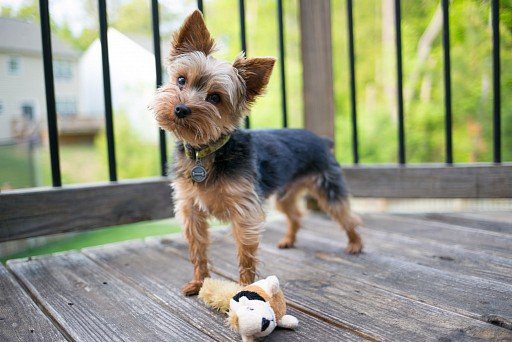
How to choose a puppy
While there is no shortage of listings for Yorkshire Terriers on the Internet, choosing puppies based on pictures is not a good idea. In order to acquire a healthy cheerful Yorkie with a real pedigree, you need to make sure of everything personally by going directly to the nursery, to the breeder. It is not so easy to find a professional, responsible breeder right away. It will be better if it is recommended to you by a veterinarian you trust, or by friends who have already used his services. You can also meet a breeder at a dog show.
Arriving at the kennel, first of all, make an idea about the dog breeder himself. If you have a person in front of you who is ready to answer any of your questions with undisguised enthusiasm in detail and competently, genuine love for animals is felt in his speech, he himself is interested in what conditions his pet will live in, you can safely proceed to choosing a puppy.
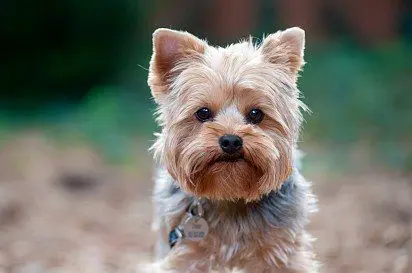
Actually, puppies at the age of 2.5-3 months are not much different from each other, so take a good look at his mother, who should be nearby. If she evoked a feeling of beauty, look at the photo of dad. Both parents must have documents issued by the Russian Cynological Federation, where their pedigree is confirmed, and at least three generations of ancestors are presented.
If everything is in order with the documents, watch the Yorkshire Terrier puppies themselves. You need an active strong man who shows interest in everything that surrounds him. He should move confidently, while his back should remain straight. The nose is supposed to be black, cold and wet (warm if he just woke up), the gums – juicy pink. Check the tummy – there should be no swelling in the navel area. The coat should be straight, black with brownish-gold markings, and should already have a silky texture to it.
After examining your chosen one, you will only have to make sure that the puppy has a stigma. As a rule, it is located in the groin area or on the inner surface of the ear and consists of letters and six numbers indicating in which cattery he was born and under which number he is registered in the club. The number of the brand must appear in the documents of the dog. Also, the puppy must have a veterinary passport with marks about the complex of vaccinations that are supposed to have by his age.
You need to be especially careful when buying mini-Yorks. Most of the fraud happens with these puppies. Under the guise of a mini-York, simply unhealthy small dogs are often sold, and unscrupulous breeders deliberately underfeed some puppies. Such babies can only be bought from dog breeders whose reputation you are absolutely sure of.
Photos of Yorkshire Terrier puppies


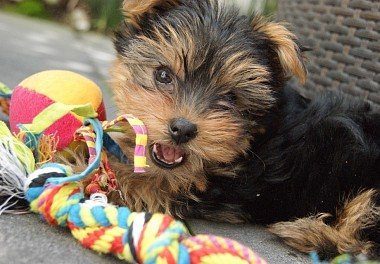
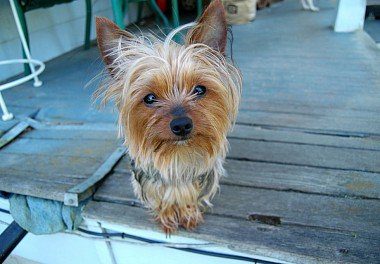
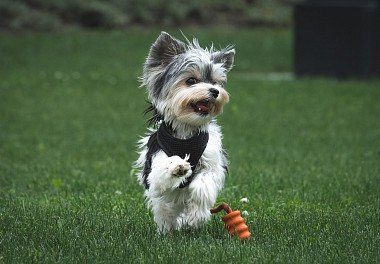
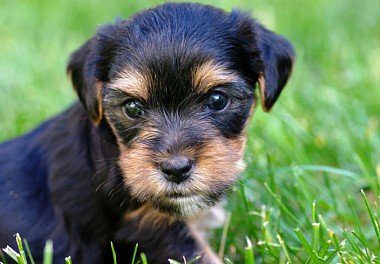
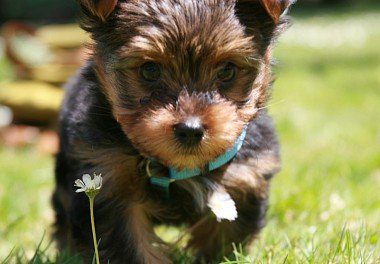
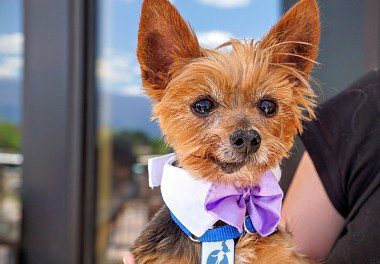
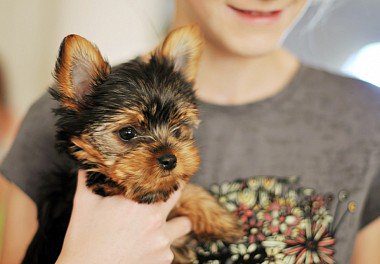
How much does a yorkshire terrier cost
The cost of a Yorkshire Terrier with a pedigree and all the necessary documents in Russian kennels is from 250 to 500$. Prices vary in different regions.
A puppy of eminent parents with championship titles can cost you 1000$.
By responding to the offer “buy a Yorkshire terrier cheaply”, you can buy a puppy for a price of 100 to 150$, but you will only know if he is a real Yorkshire terrier when the dog grows up.



